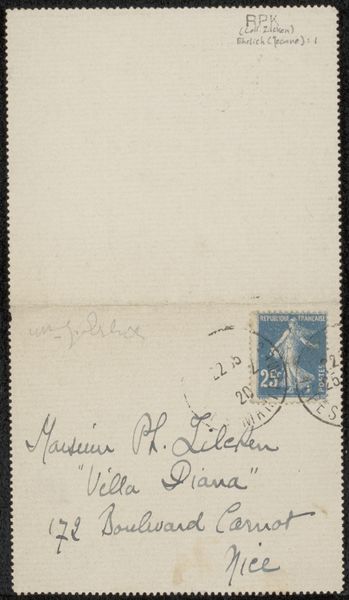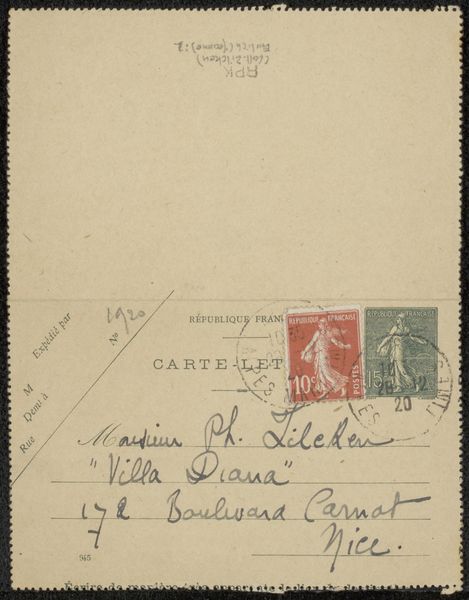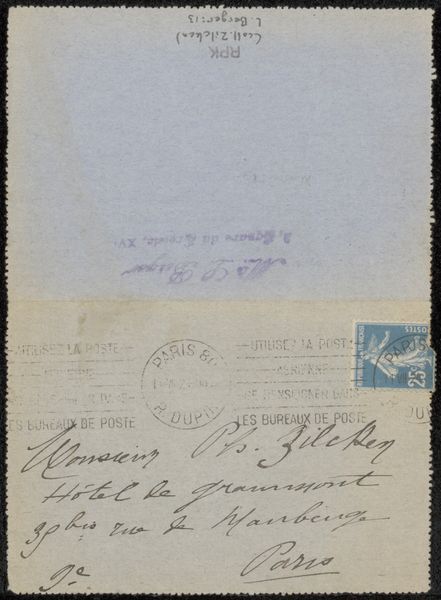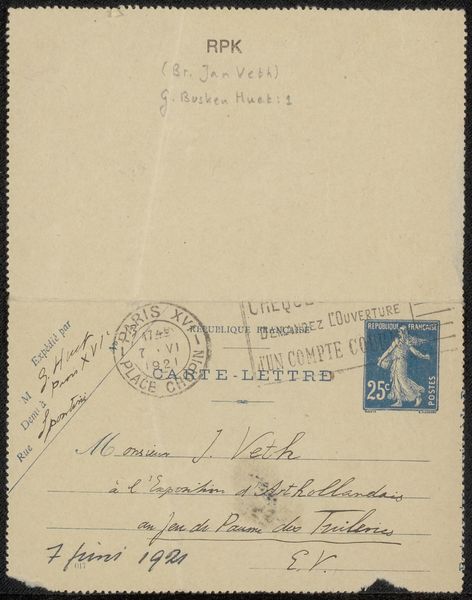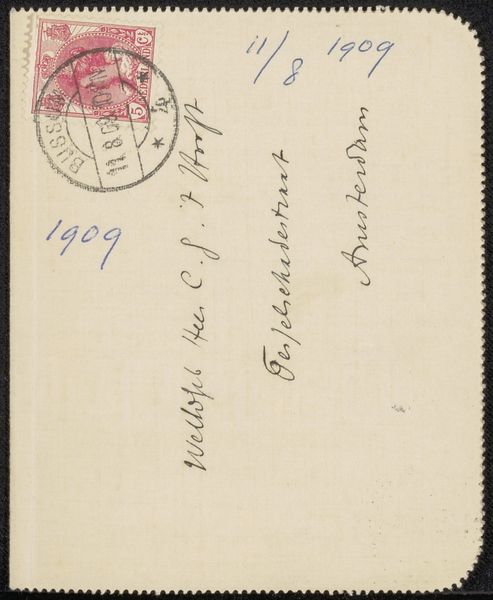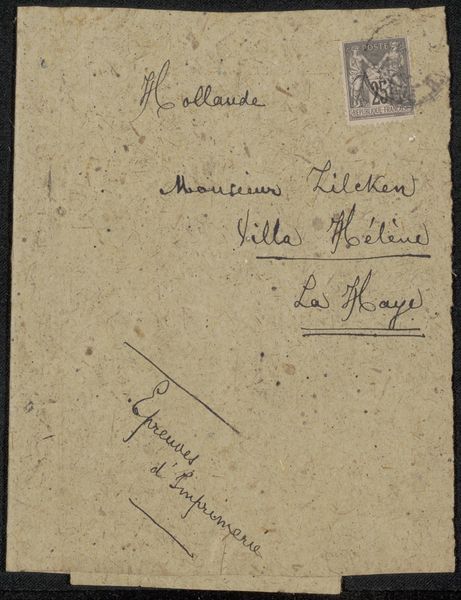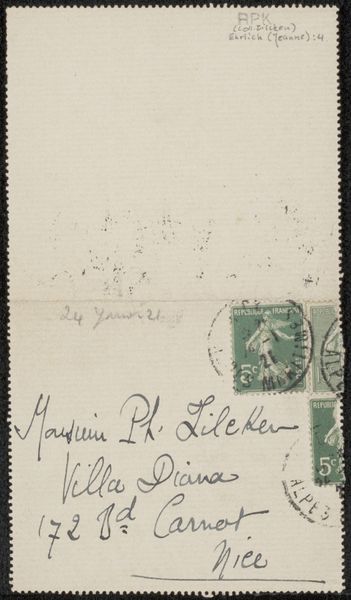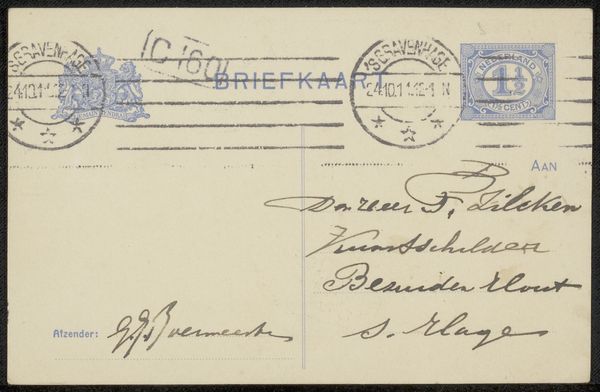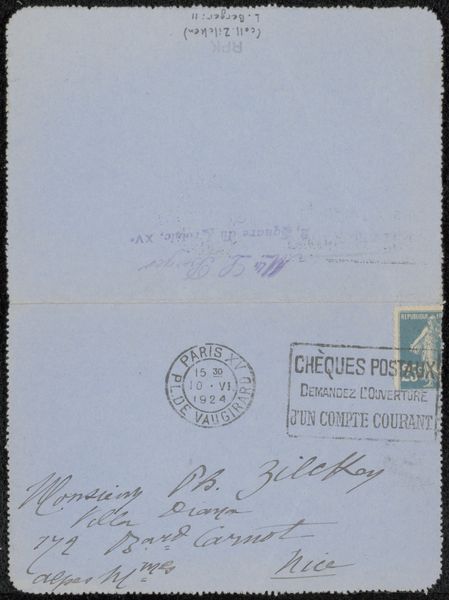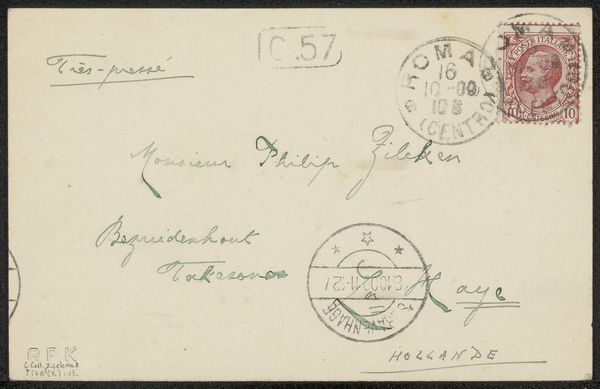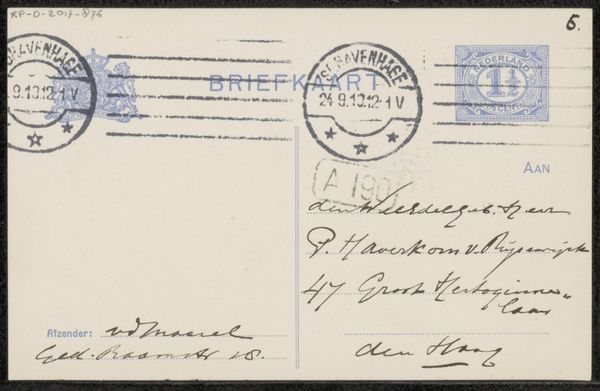
drawing, paper, ink
#
drawing
#
paper
#
ink
#
coloured pencil
Copyright: Rijks Museum: Open Domain
Editor: Here we have Léonce Bénédite’s "Briefkaart aan Philip Zilcken," likely from 1908. It’s an ink drawing on paper – a simple postcard, really. It feels so personal, a direct connection to the past through the handwritten address and the faded postmark. What symbols jump out at you? Curator: It’s fascinating how seemingly mundane objects can act as portals. Notice the stamp – a Marianne figure, a symbol of France itself, of liberty and reason, adopted during the Revolution and still potent. The hotel's name "Hotel des Étrangers" itself implies transit, cultural exchange. What echoes of colonial history might reside in the simple act of sending this postcard from Algiers? Editor: Colonial history… I hadn’t considered that. So, the location, Algiers, combined with the French stamp and the hotel frequented by "foreigners", all contribute to the postcard's meaning? Curator: Precisely. Think about what Algeria represented to the French imagination in 1908 – a territory both exotic and integral, a space of encounter and perhaps of tension. The recipient, Zilcken, also French but perhaps with a Dutch name - this hints at an interesting social circle, cosmopolitan and interlinked. And the handwritten note speaks of personal connection amidst wider geo-political implications. Editor: That's really insightful! It's amazing how much historical context is packed into such a small piece of paper. I’ll definitely be thinking about the layered symbolism the next time I see something like this. Curator: Indeed. A postcard is not just a card – it's a carrier of cultural memory, a tiny fragment of a much larger, often untold, story.
Comments
No comments
Be the first to comment and join the conversation on the ultimate creative platform.
